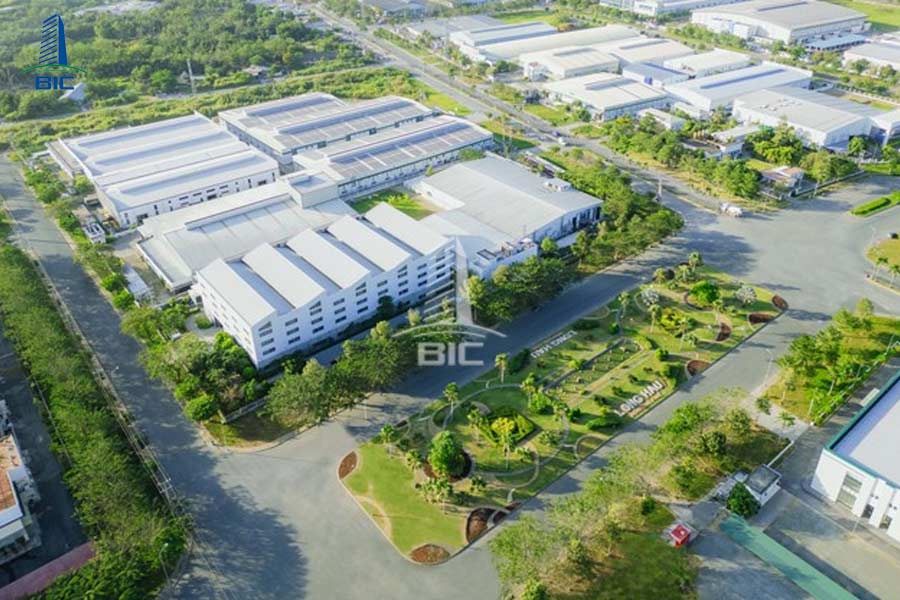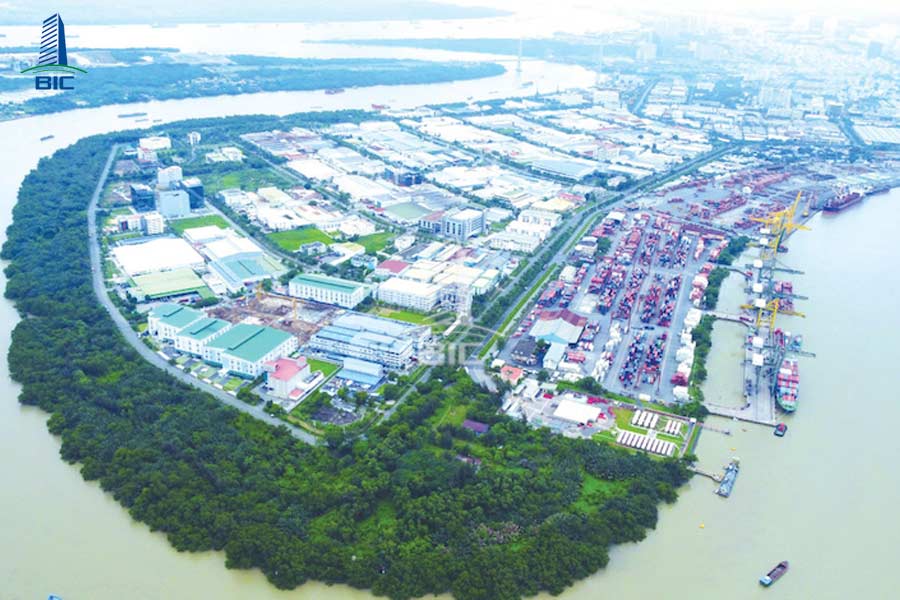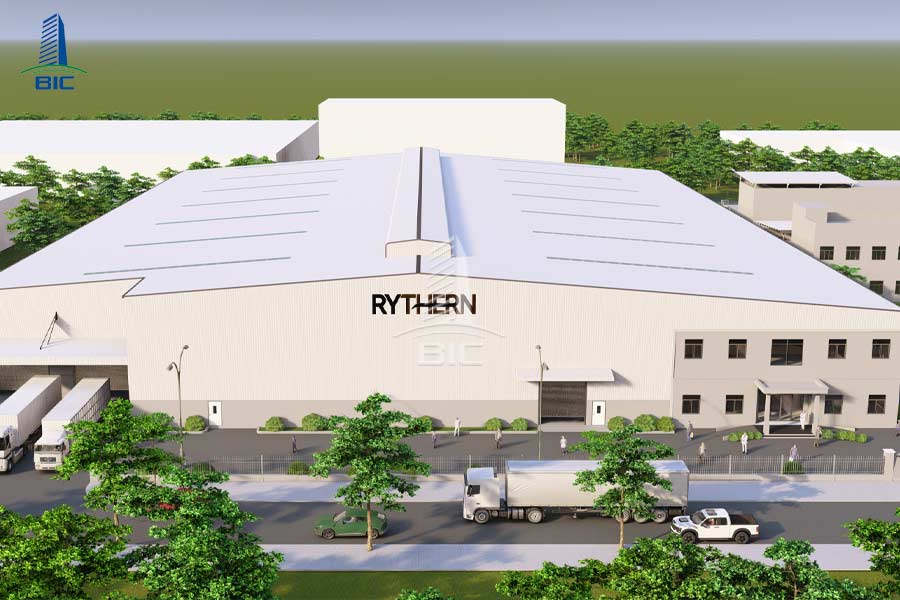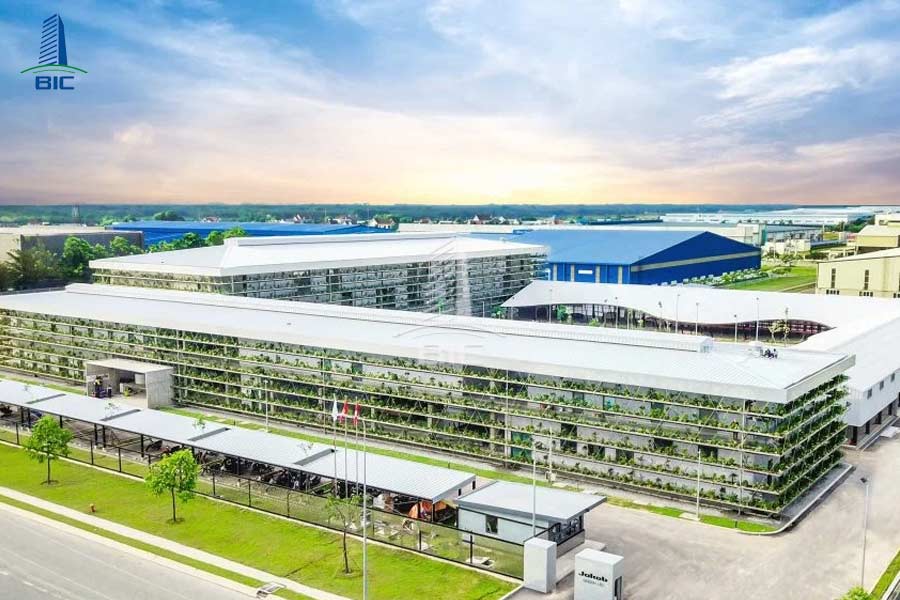
Industrial parks (IPs) and export processing zones (EPZs) are two models of centralized production development that play a pivotal role in the strategy of attracting investment and economic development. However, the differences in functions, management mechanisms, and investment incentives between these two types have not been clearly identified by many businesses.
A correct understanding of industrial parks and export processing zones forms the foundation for investors to choose the right industry orientation, thereby implementing appropriate factory design and construction plans, saving costs, and ensuring long-term legal compliance.
In this article, BIC will systematize the core concepts, differentiating points, as well as the important criteria when investing in each type. Through that, it will help businesses optimize investment efficiency while proactively grasping the trend of sustainable industrial infrastructure development in the future.
Industrial parks are planned centralized areas, dedicated to industrial production and supporting industrial services. This is a familiar model in the economic and industrial development strategies of many countries, with Vietnam being a prominent destination in Southeast Asia.
Industrial parks often attract a diverse range of industries such as: mechanical engineering, textiles, electronics, food processing, construction materials... in order to optimize infrastructure use and labor resources. Enterprises in IPs are arranged in the same area to easily access synchronized technical infrastructure including:
- Internal traffic systems and connections to national highways, ports, and airports;
- Electricity supply, water supply, telecommunications;
- Centralized wastewater treatment plants;
- Logistics services, warehousing, etc.
The factory design in an industrial park needs to ensure compliance with regulations on building density, safety distances, fire prevention and fighting standards, and should aim towards a modern, energy-saving production model.

Export processing zones are a special model of industrial parks, established with the main goal of attracting enterprises with foreign direct investment (FDI), specializing in manufacturing goods for export.
EPZs have high independence and are often equipped with separate control systems for customs and tariffs. Enterprises in export processing zones enjoy many incentives in terms of taxation, simplified import-export procedures, and easy access to high-quality labor.
Some notable characteristics:
- Priority is given to industries with high technology content and export value chains;
- Closed logistics and customs processes, convenient for importing raw materials and exporting finished goods;
- Working environment designed to international standards, meeting the requirements of global partners.
Due to the specific focus on export production, factory design and construction in export processing zones must meet strict criteria in terms of quality control, environment, and integrate modern management systems right from the construction investment stage.

The choice between industrial parks (IPs) and export processing zones (EPZs) does not only depend on initial investment costs but more importantly must match the production orientation, target market, and long-term development strategy of the business. Below are the core differences to help investors make accurate decisions:
|
Criteria |
Industrial Parks (IPs) |
Export Processing Zones (EPZs) |
|
Purpose of use |
Serve multiple industries: mechanical, electronics, food, construction materials, logistics... Suitable for both domestic consumption and mixed export |
Specialized for enterprises producing 100% export goods. Priority given to high-tech industries and global supply chains |
|
Main investment entities |
Domestic enterprises and FDI enterprises |
Mainly FDI enterprises |
|
Tax policies & incentives |
Enjoy investment incentives according to region. Preferential tax rates but no separate customs regime |
Higher tax incentives. Separate customs procedures like non-tariff zones |
|
Management mechanism |
Open and flexible management, suitable for various production models |
Independent management, strictly controlling import-export and internal operations |
|
Market consumption |
Flexible between domestic and international markets |
Mainly limited to international markets (exports) |
|
Construction design requirements |
Flexible design according to industry. Must ensure technical, fire safety, and environmental standards |
Design must comply with international standards, integrate internal controls, logistics – import-export – environmental treatment. Suitable for export production models |
|
Initial investment cost |
Can be lower, depending on industry |
Usually higher due to export and technical requirements |
|
Typical examples |
VSIP, Long Hau, Amata, Nam Tan Uyen… |
Tan Thuan (HCMC), Linh Trung (HCMC), Hai Phong EPZ… |
Not all industries are suitable for every industrial park or export processing zone. Enterprises need to carefully analyze the planning orientation of each zone issued by the provincial or central government to ensure the investment project falls within the permitted sector list.
In addition, conducting surveys from the early stages will help evaluate the feasibility of construction design according to specific production functions: for example, electronics component manufacturers require zones with E-waste and clean air treatment systems; wood processing enterprises require optimized dust control and fire prevention systems.
When investing in construction, investors must comply with strict standards related to:
- Safe distances and construction density, ensuring escape routes and incident handling;
- Building height, ensuring compatibility with air exhaust, heat dissipation, and load-bearing systems;
- Fire prevention and fighting (FPF): in accordance with current QCVN and TCVN regulations specifically for industrial buildings.
Legal regulations such as QCVN 06:2022/BXD (National technical regulation on fire prevention and fighting in industrial works), TCVN 9375 (on factories, warehouses…) and environmental criteria must be simultaneously applied. Depending on the type of IP or EPZ, environmental, wastewater, and waste treatment criteria may also be stricter, as seen in green-certified zones or high-tech EPZs.

Modern industrial park and export processing zone projects today cannot separate from “green” and “smart” factors. Enterprises need not only to design factories that ensure production functions but also to integrate the following elements:
- Rooftop solar power systems: utilize renewable energy, reduce long-term operating costs;
- IoT technology and smart management: monitor electricity and water consumption, control production environment, detect energy leaks;
- Circular water systems and reuse treatment: meet environmental standards, reduce industrial emissions;
- Landscape design, internal green areas: not only to meet LEED, LOTUS, or EDGE standards, but also to improve the working environment.
These elements help businesses meet ESG (Environmental – Social – Governance) criteria, which are increasingly important conditions in international investment packages and global supply chains. That is why factory design and construction in IPs or EPZs today must be strategically planned from the outset with a long-term vision.

The US–China trade war, rising labor costs in developed countries, and the trend of supply chain diversification have driven a wave of production shift to Southeast Asia, with Vietnam being a strategic destination.
- Many corporations in technology, electronics, textiles, logistics have chosen Vietnam as a secondary or replacement manufacturing base;
- Vietnam's advantages stem from: favorable geographical location, abundant labor force, next-generation free trade agreements (FTAs), and attractive FDI incentives.
Accompanying this is the robust development of industrial parks and export processing zones in provinces like Long An, Bac Ninh, Hai Phong, Binh Duong, Quang Ninh… with high-standard infrastructure, transparent legal framework, and well-developed investment support services.
Choosing the right IP or EPZ, along with synchronizing factory construction planning with international investment strategies, will help enterprises seize the production shift opportunity timely and effectively.
Clearly distinguishing between industrial parks and export processing zones is not just basic knowledge but the foundation that helps businesses make precise investment decisions aligned with long-term business strategies.
From functional characteristics, incentive mechanisms, to factory construction standards each type has its own requirements that need thorough analysis. In the context of accelerating trends such as greening, digital transformation, and global supply chain shifts, choosing the right zone type and developing standardized, synchronized factory design from the outset is the key to effective investment.
Let the professional team of BIC’s industrial factory design consultants accompany you from site surveys, design proposals to legal procedures.